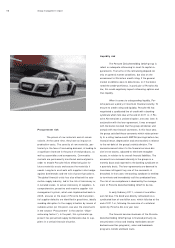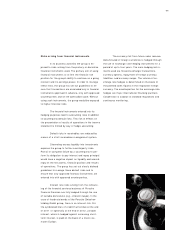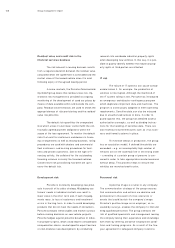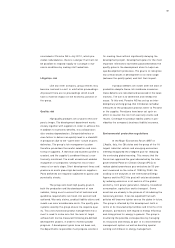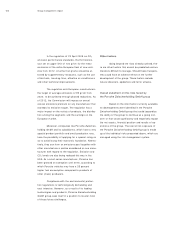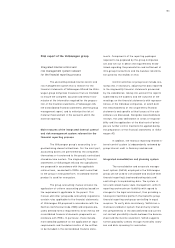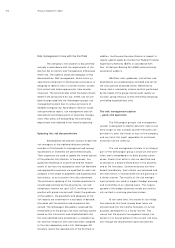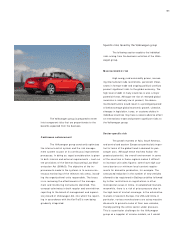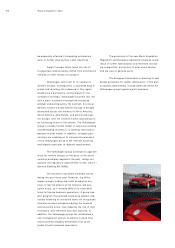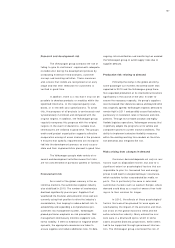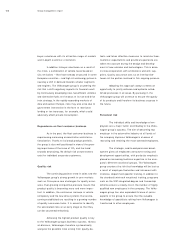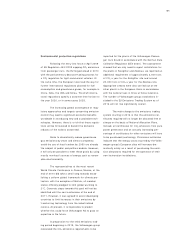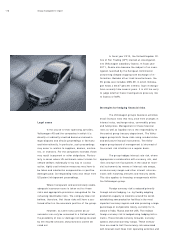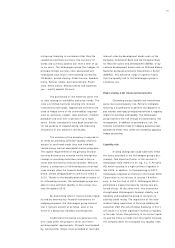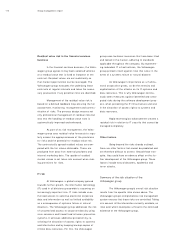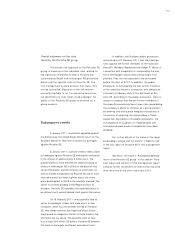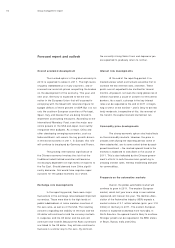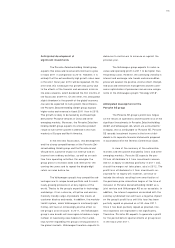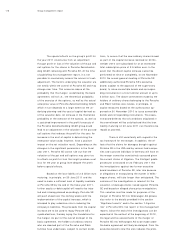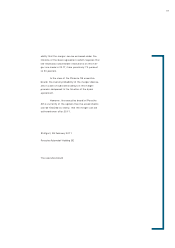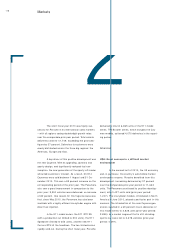Porsche 2010 Annual Report Download - page 110
Download and view the complete annual report
Please find page 110 of the 2010 Porsche annual report below. You can navigate through the pages in the report by either clicking on the pages listed below, or by using the keyword search tool below to find specific information within the annual report.Group management report
buyer reluctance with its attractive range of models
and in-depth customer orientation.
In addition to buyer reluctance as a result of
the crisis, a combination of vehicle taxes based on
CO2 emissions – like those already structured in some
European countries – and high oil and energy prices is
causing a shift in demand towards smaller segments
and engines. The Volkswagen group is countering the
risk that a shift negatively impacts its financial result
by continuously developing new, fuel-efficient vehicles
and alternative fuels on the basis of its fuel and drive
train strategy. In the rapidly expanding markets of
Asia and eastern Europe, risks may also arise due to
government intervention in the form of restrictive
lending or tax increases, for example, which could
adversely affect private consumption.
Dependence on fleet customer business
As in the past, the fleet customer business is
experiencing increasing concentration and interna-
tionalization. Thanks to its broad product portfolio,
the group is also well positioned in view of the grow-
ing importance of the issue of CO2 and the trend
towards downsizing. No default risk concentrations
exist for individual corporate customers.
Quality risk
The continuing positive trend in sales and the
Volkswagen group’s strong growth in core markets
such as China pose new challenges for quality assur-
ance. Ever-growing competitive pressure means that
product quality is becoming more and more impor-
tant. In addition, the continuous increase in vehicle
complexity and the new drive systems that are be-
coming established are resulting in a growing number
of quality assurance tasks. It is essential to identify
the associated risks at an early stage so that they
can be countered effectively.
Achieving the highest product quality is key
to the Volkswagen group’s business success. Across
all divisions, Volkswagen therefore systematically
analyzes the possible risks arising from quality de-
fects and takes effective measures to minimize them.
Customer expectations and practical experience are
taken into account during the design and develop-
ment of new vehicles and technologies. This is done
in close cooperation with all divisions and with sup-
pliers. Quality assurance acts as an interface be-
tween all the parties involved in this ongoing process.
Adopting this approach always creates an
opportunity to jointly enhance and optimize estab-
lished processes in all areas. By pursuing it, the
Volkswagen group will continue to ensure the quality
of its products and therefore its business success in
the future.
Personnel risk
The individual skills and knowledge of em-
ployees are a major factor contributing to the Volks-
wagen group’s success. The aim of becoming top
employer in the automotive industry at all levels of
the company improves Volkswagen’s chances of
recruiting and retaining the most talented employees.
The strategic, end-to-end personnel devel-
opment gives all employees attractive training and
development opportunities, with particular emphasis
placed on increasing technical expertise in the com-
pany’s different vocational groups. The Volkswagen
group counters the risk that knowledge will be lost as
a result of employee fluctuation and retirement with
intensive, department-specific training. In addition to
the standard twin-track vocational training, programs
such as the StIP integrated degree and traineeship
scheme ensure a steady rise in the number of highly
qualified new employees in the company. The Volks-
wagen group has also expanded its base of senior
experts in the group to ensure that the valuable
knowledge of specialists retiring from Volkswagen is
transferred to other employees.
10 8


